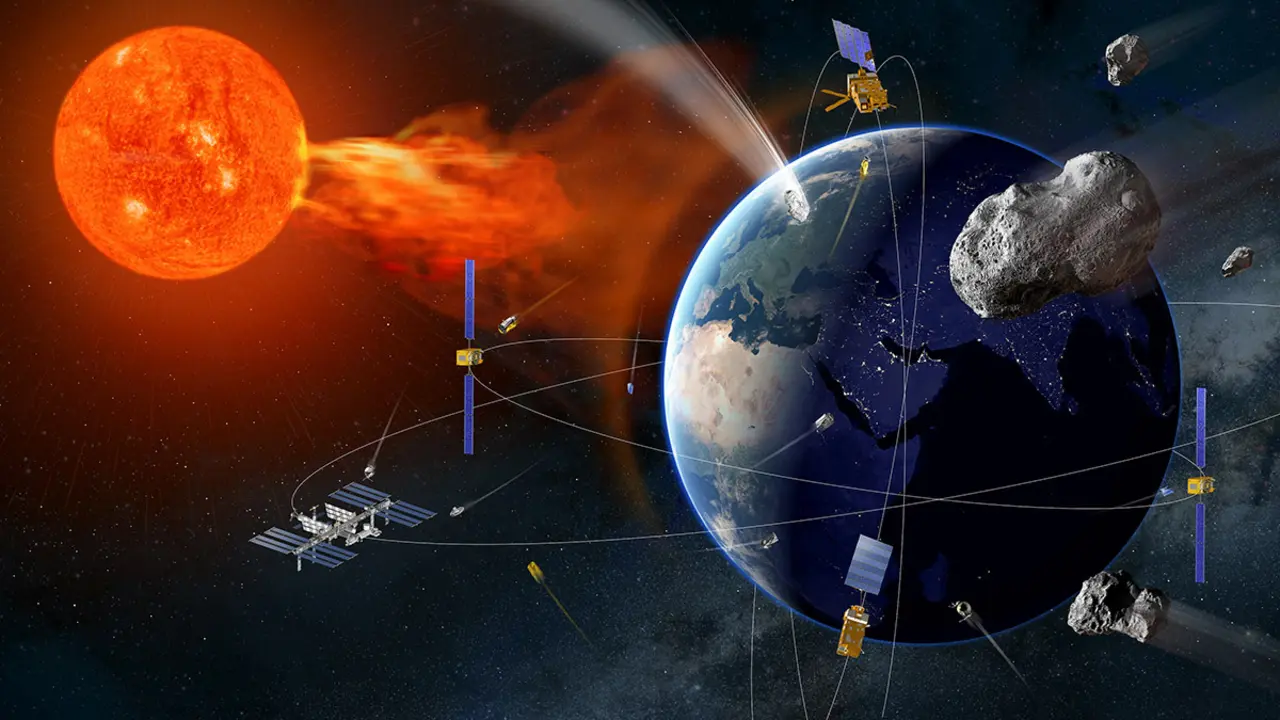This is the NASA woman leading the launch of the Artemis I mission to the Moon

The success or failure of the inaugural Artemis I mission that opens the door to America's return to the Moon rests on the shoulders, expertise and intelligence of a woman, the first to hold the important position of Launch Director of the National Aeronautics and Space Administration (NASA) in its 64-year history.
Her name is Charlie Blackwell-Thompson and it is she who pronounces the English word "go", which starts the liftoff process of the new space launcher called Space Launch System or SLS. At this very moment, she has pride of place in the same room that was in control of the Apollo 11 mission in July 1969 at the Kennedy Space Center in Florida, which culminated in the descent of the first two human beings to the Moon.

She is ultimately responsible for leading and managing the planning and execution of the overall operations to give the go-ahead for the Artemis I mission, which is scheduled to launch on 29 January between 14:33 and 16:33 Spanish time. It's not a new job for her because, "I've spent half my life as an engineer in the room where I'm now the boss".
Her duties include overseeing the countdown from 46 hours and 40 minutes before liftoff of the SLS launcher carrying the manned Orion capsule on top, this time without astronauts on board. Below it is a first team of 91 senior and junior engineers, and a second support team in an adjoining room with another 60 technicians. They are all seated in front of hundreds of screens reflecting all the parameters of interest to the on-board and ground teams, including meteorological parameters.
For almost two full days, Charlie Blackwell-Thompson's role and main concern has been to direct, coordinate and integrate all the procedures, associated plans and the dozens of support teams deployed throughout the United States involved in the countdown of the launch process, all of which must conclude with the rocket's liftoff and flight to the Moon.

More than 20 years at NASA
A computer engineer from Clemson University in Clemson, South Carolina near her birthplace, Gaffney. Charlie Blackwell-Thompson is a married mother of three and was appointed to the important position she now holds in January 2016. Until then, she was the head of the Test Management Office for the ground systems operations and development programme at Kennedy Space Center.
By her own account, she became interested in space exploration "when I was a grade school student watching the Apollo Moon missions take off on TV". Her professional career began in 1988 after graduating as a computer engineer. That same year she was hired by the Boeing industrial corporation as a flight software engineer responsible for integrating and testing satellites and other objects that NASA's space shuttles had to place in orbit.

Her career at NASA began in 2004, when she was hired as test manager in the Launch and Landing Division of the space shuttle programme. As she has said, she began her work at the Agency by "writing on a blank sheet of paper, which was an opportunity to figure out what we should do and how we should do it".
After the decommissioning of the shuttles in 2011, she was appointed head of the test management branch of the Earth Systems Development Office. She led an operations team that developed the plans, procedures and processes for integrated test, launch and recovery operations.

The NASA blog reports at 7:20 a.m. EDT on 29 August that Charlie Blackwell-Thompson "has given the go-ahead to officially begin loading (fuel) boosters into the Space Launch System rocket".
The countdown continues to the 29 August liftoff
It also details that the launch weather officer "now reports that there is no indication of lightning within five nautical miles of launch ramp 39B", from where the SLS will lift off on a planned trajectory of 42 days, 3 hours, 20 minutes in which the Orion capsule is to travel 2.1 million kilometres.
However, at 9:41 a.m. - 03:41 a.m. in Florida - a new communiqué reported that engineers had fixed a liquid hydrogen leak in the launcher's central stage during the tank filling phase.

Fortunately, at 10:50 Spanish time, the Agency has again reported that the SLS rocket's central stage fuel tanks feeding the four powerful RS-25 engines are filled to 81 percent liquid oxygen (LOX) & 61 percent liquid hydrogen (LH2).
Together with the solid fuel boosters, their mixture generates the energy needed to lift the launcher from its position on the liftoff ramp and bring the SLS to its highest atmospheric strength in 90 seconds.

Engineers have also begun loading the upper stage of the rocket, which is responsible for propelling the Orion space capsule on its way to the Moon. The sequence of processes to get the Artemis I mission off the ground is in full progress.
Here is the link to watch the launch live.









